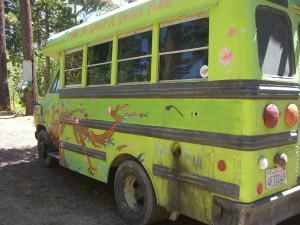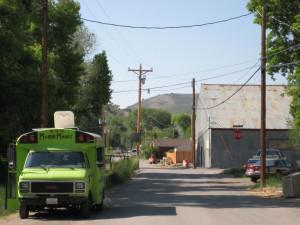 Around the beginning of August, with our bus fully functional again, and about halfway through our adventure, I had ample time to process this whole biofuel phenomenon. As brought to my attention originally by my father, who would send me periodic articles on the topic, in addition to me personally offering explanations to curious people across the nation, I had begun to realize the downsides of biofuel as a solution to our reliance on fossil fuels for transportation.
Around the beginning of August, with our bus fully functional again, and about halfway through our adventure, I had ample time to process this whole biofuel phenomenon. As brought to my attention originally by my father, who would send me periodic articles on the topic, in addition to me personally offering explanations to curious people across the nation, I had begun to realize the downsides of biofuel as a solution to our reliance on fossil fuels for transportation.
The first disturbing issue was the massive deforestation of rainforests already occurring in order to grow crops for biofuel. According to the United Nations Environment Programme, clearing tropical forests for biodiesel production can actually lead to an overall carbon debt compared to the savings from using biofuel as opposed to fossil fuel for transportation (Working Group on Biofuels of the International Panel for Sustainable Resource Management, 2009). Of particular concern are tropical countries where agricultural yields are high, such as Indonesia and Brazil. “If current trends continue, in 2030 the total rainforest area of Indonesia will have been reduced by 29% as compared to 2005, and would only cover about 49% of its original area from 1990” (Working Group on Biofuels).

Significant improvements must be made with regard to the efficiency of production and use of biomass, including the restoration of degraded lands, and utilization of all waste and production residues, in order for biofuel to be a more sustainable option. Furthermore, policy measures will be increasingly important to encourage sustainable land use and assess the level of demand that can be realistically supplied, if at all. An idea I found interesting by Robert Walker, author of “The Impact of Brazilian Biofuel Production on Amazonia” follows: “If we no longer have an Amazônia of the mind, a distinct place requiring distinct protections, it becomes that much more difficult to provide them” (Walker, 2011, sec. 6). He compares the potential fate of Amazonia to a former forest of our own country, once a canopy stretching from the Atlantic to the Mississippi, housing the now extinct, Carolina parakeet and Eastern wood bison. It was nearly impossible to imagine what such a vast forest would be like while driving through the Midwest, searching for waste veggie oil in many small towns where people’s entire livelihoods revolved around the production of agricultural crops like corn.

